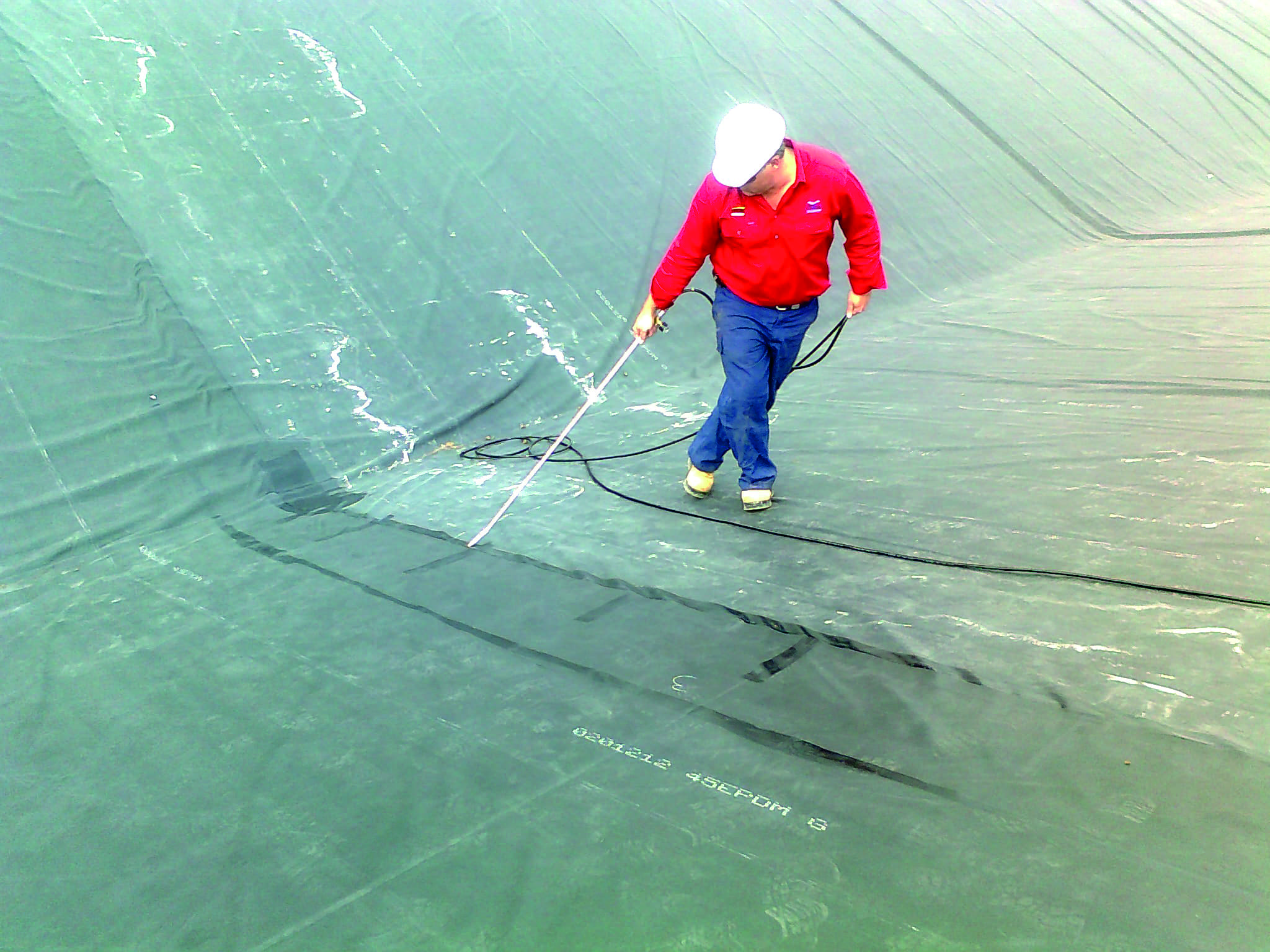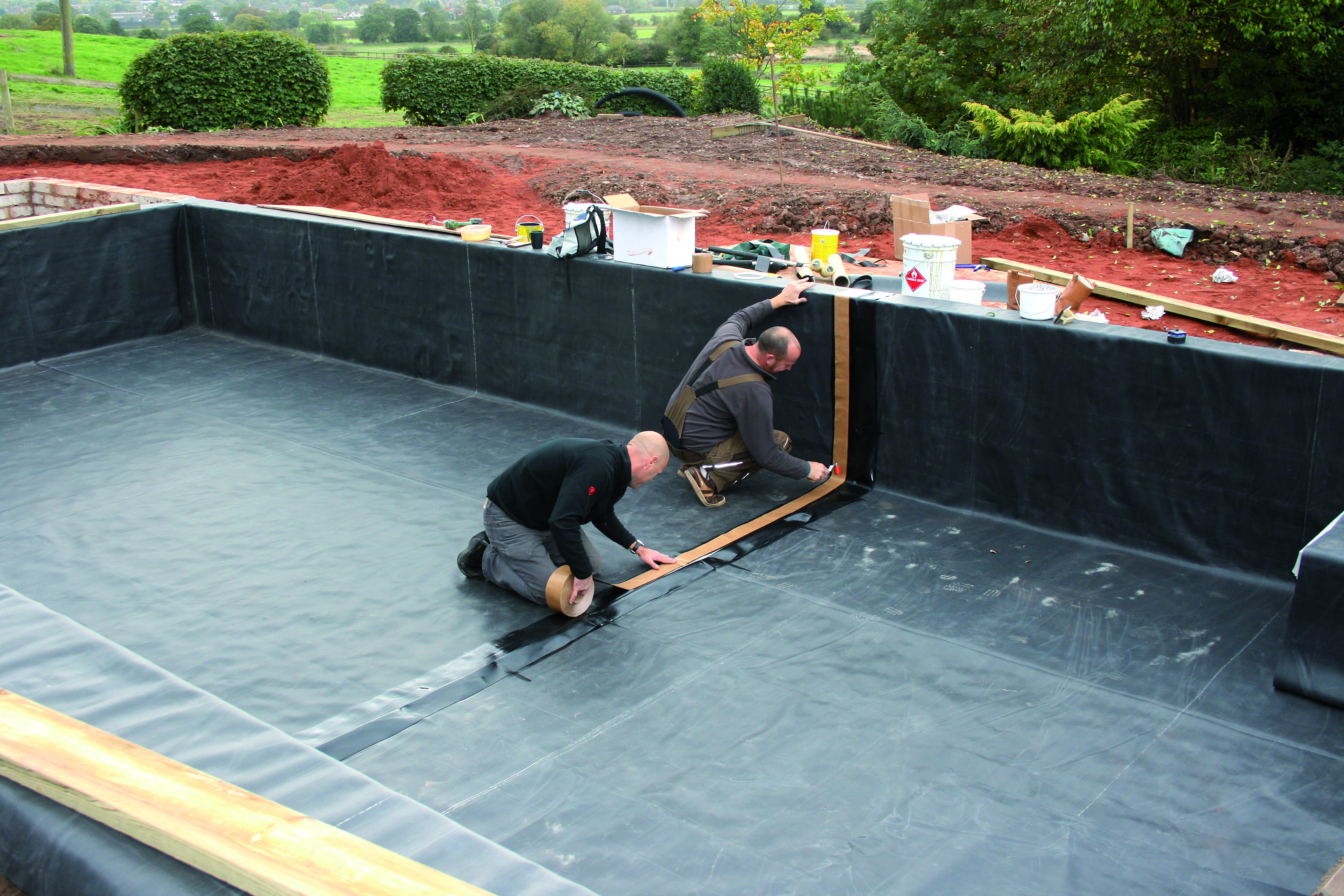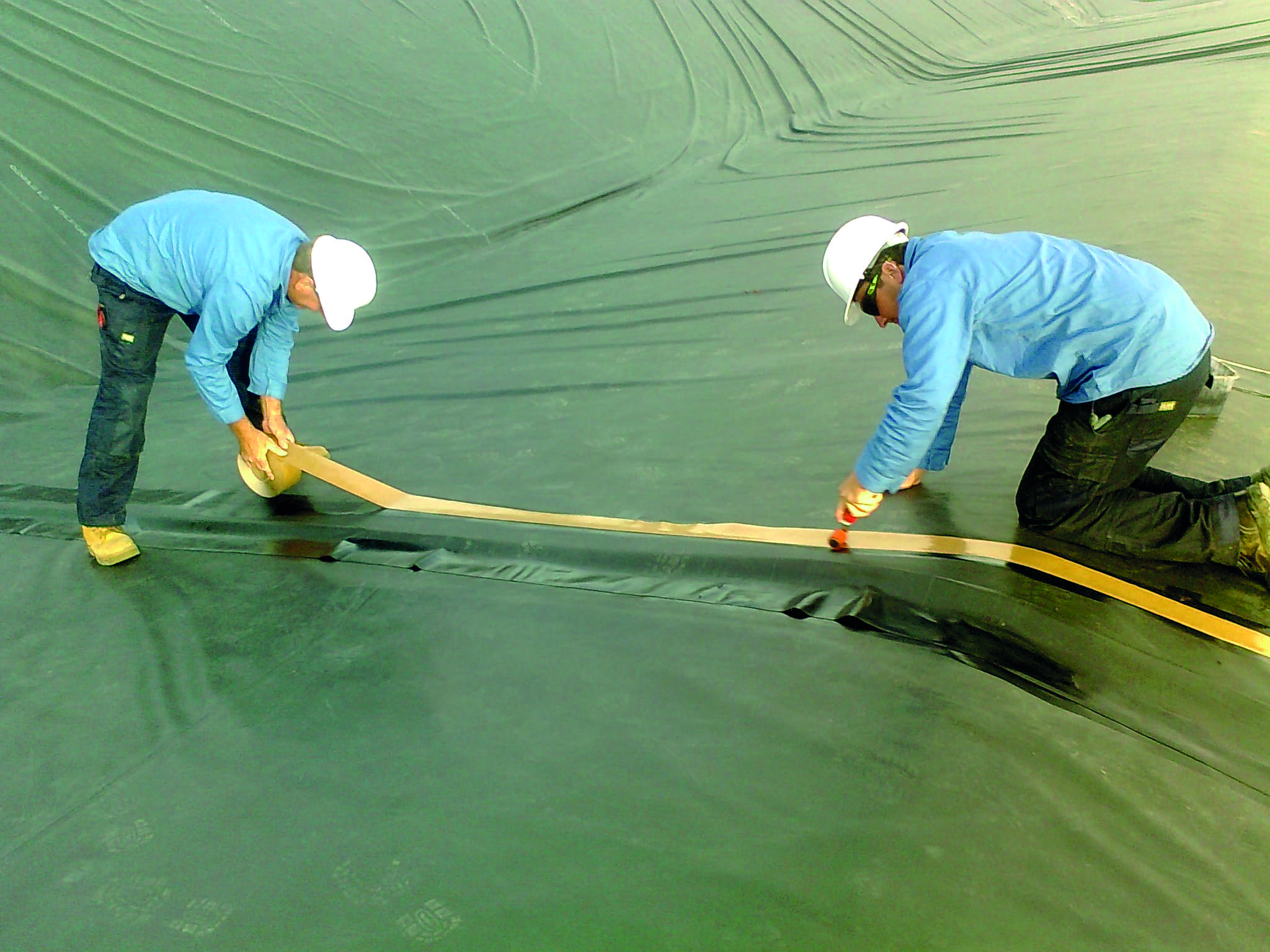ALL ABOUT SEAMS IN EPDM LINERS
Elevate’s EPDM lining membranes are available in large sheets up to 15.25 m wide, the biggest of them being able to cover almost 1,000 m². This significantly minimizes the need to carry out field seams. However, on some projects, seams are simply unavoidable. Carrying out strong, durable seams is vital to guarantee the watertightness of a water reservoir.
Our EPDM liners are made of a thermoset material, so they do not melt in contact with very high temperatures. Therefore, field seams are made using a cold vulcanization process through our QuickSeam Splice Tape and the QuickPrime Plus Primer. This seaming technology has been used since the 1990s with great success. Even if it is a simple process, it results in reliable, flexible, elastic and durable seams.There are several advantages to this way of working.
One of them is that it does not require electricity or any special machinery. The risk of mistakes is therefore limited, as the quality of the seam does not rely on the performance of the machinery or on its settings (temperature, speed, pressure) which must be adapted to the changing weather conditions.
Seam control? Piece of cake
You may think that checking the quality of field seams is impossible or very difficult, but there are several simple ways of carrying out seam controls in water reservoirs and ponds waterproofed with our EPDM lining membranes.
The first and most simple one is carrying out a visual inspection, where the quality of the seams can be efficiently inspected after completion of the installation by checking the location of the tape, the quantity of primer, whether there are tape wrinkles or “fish mouths”, or any air bubbles.
Another way of inspecting seams involves the use of a vacuum chamber. After applying soapy water to a seam that is at least 24h old, a depression is applied into the vacuum chamber, forcing air through the potential non-conformity, which would show as an air bubble. Quite genius, right?
A third option is using an air lance to check the entire length of the seam. The air lance blows compressed air to the edge of the field seam. Any non-conformity can be detected visually and by a distinct change in sound.
Last, but not least, seams on EPDM lining membranes can be tested even after many years by measuring their strength with ‘shear and peel’ tests. A seam sample is collected (minimum 30 cm wide x 50 cm long) from the pond or water reservoir and is sent to a lab where tests are carried out.
If, as a result of the seam control check, a repair to the seam needs to be done, this is very easy to carry out using a minimum of materials.
Are you curious about using EPDM for your next project? Do you have a specific question? Do not hesitate to contact us, we have the best specialists at your service who are ready to guide you step by step.


